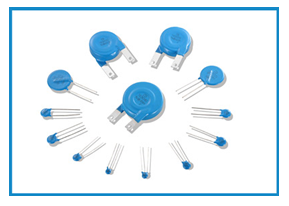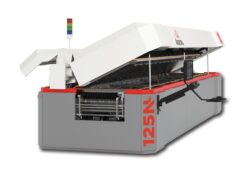Overvoltages and current spikes must be avoided in many areas of electronics; numerous laws and regulations in the various destination countries specify product safety in explicit terms. The corresponding overvoltage protection components can also lower the failure rate as well as maintenance and repair costs.
Static discharges and overvoltages (transients) can destroy circuits. If a surge voltage that exceeds the permissible operating voltage of an IC is applied to a circuit, it can permanently damage the IC.
To clamp these damaging transients, that is, to deflect them to ground potential, thereby protecting the IC, various components for overvoltage protection are available. These include MOVs (Metal Oxide Varistors) and TVS (Transient Voltage Suppressor) diodes, GDTs (Gas Discharge Tubes) or ESDs (Electrostatic Discharge Diodes).
Image 1 provides a schematic overview of the various types of protective equipment and levels for electronic circuits. The principle required here is the use of multiple protective elements to deflect transient overvoltages and overcurrents. Components such as MOV, GDT, SPG (Spark Gap Protectors) and TSS (Thyristor Surge Suppressors) serve as the primary form of protection against overvoltage. TVS and ESD components provide the secondary protective effect. PPTCs (Polymeric Positive Temperature Coefficient Thermistors) act as overcurrent protection and as decouplers, while NTCs (Negative Temperature Coefficient Thermistors) are used in order to suppress overcurrents.
Varistors score highly thanks to their short response time
Due to their very short response time, varistors are used in numerous applications for clamping transient overvoltages of below 20 ns. The best-known of these are Metal Oxide Varistors (MOV). That is because they are capable of absorbing overvoltages – and significantly higher voltages than TVS diodes.
MOVs are manufactured primarily from zinc oxide. They offer a wide voltage range from 18 to 1800 V, and for surge currents of up to 70 kA, in some cases even more. The MOVs by Yageo are available with safety certification according to UL/TÜV/VDE(CSA/CQC) and for operating temperatures from -40 to +105°C and -40 to +125°C. Their Ipp values range from several hundred amperes up to several dozen kiloamperes, and they have pulse forms of 8/20 μs. In this case, the VBR value is bidirectional and symmetric.
For this reason, these MOVs are widely used in AC current supplies, signal lines and circuit breakers, LED drivers or smart-metering systems. Rotor diameters of 5 to 53 mm enable the simple selection of the correct component for each of these applications. Yageo also offers TMOV varistors as a special solution. By combining a Metal Oxide Varistor and an NTC, they can effectively limit both currents as well as overvoltages.
The disadvantage of MOVs is that, unlike TVS diodes, they can age. This means that they only have a limited service life, depending on the transients that they absorb. To mitigate this effect, they are typically used in series with GDTs or SPGs.
TVS diodes guarantee rapid unidirectional or bidirectional blocking
TVS diodes, also referred to as suppressor diodes, TVPs (Transient Voltage Protectors), ABDs (Avalanche Breakdown Diodes) or BODs (Break-Over Diodes), can clamp overvoltage peaks within a safe range of picoseconds and restrict them to a safe value to protect the circuit from damage. These are the components with the best clamping behavior among Image 3: The operating principle of a TVS diode parallel to the load use of protection components in key applications (source: Yageo) the protective diodes and are connected parallel to the load to be protected (Image 3).
The primary advantages of TVS diodes are their short response time and low capacitance and their ability to provide unidirectional and bidirectional protection. As such, they are ideally suited for DC current supplies, security and surveillance systems as well as in the telecoms and automotive sectors.
TVS diodes by Yageo are supplied with UL safety certification. They are also available with automotive-grade qualification (AEC-Q101) and stand out by virtue of their low dynamic internal resistance and rapid response characteristics. They are available for a Pppm of 200 to 30,000 W for 10/1000-μs pulse forms and Ipp values of 6/10/1620 kA in 8/20-μs pulses. Vrem is specified as 3.3 to 600 V (or higher). Enclosure shapes SMAJ, SMBJ, SMCJ, DO-41, DO-15, DO-201 and others are available. Image 4 shows a comparison of the protective properties of MOVs and TVS components.










